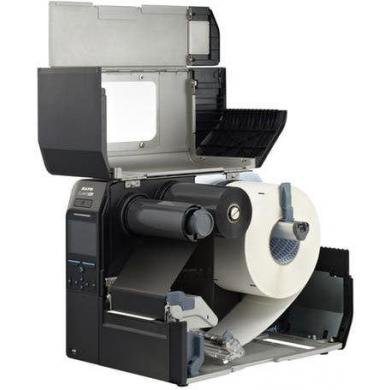Selecting an automated print and apply system can be a daunting task, especially when it’s a company’s first foray into automated labelling. As the name implies, the print engine is the key component of the whole system and its choice should not be taken lightly.
The usual selection process revolves around specific aspects: already owned models, printing speed, Direct Thermal Vs Thermal Transfer, resolution etc… But that’s limiting, not to say that is a mistake; there are other factors, often overlooked, that should be seriously considered during the evaluation process.
Serviceability
Just like a vehicle engine, there are many elements of the print engine that require scheduled cleaning, maintenance and, sometimes, replacement; components such as the thermal print head or the platen roller. If these items are difficult to replace, or if areas of the printer are not readily accessible for cleaning, the result can be defective printing, frustrated users and production line downtime.

Sometimes a more in-depth service work is required, being this the case its fundamental the print engine can be easily removed and put back in place as fast as possible. This removable print engines, often referred to as an “OEM print engine”, provide two important benefits: ease of access, ease of replace.
To ensure service can be done in a timely manner, it’s important for key internal components to be simply accessible and that most of them can be reached without the need to disassemble other areas of the printer. Ask your technical personnel for their experience with different print engine models. We did so.
That’s why SATO specialized itself in OEM engines and our modules are the best in class when it comes to changing a print head without tools or accessing the PCB for maintenance.
Adaptability
Print engines are vastly different “animals” when compared to traditional desktop label printers. The latter generally see either relatively low volume label production or bursts followed by long periods of idle time.
Also, minor detail, they are generally in an office or other protected environment. Print and apply engines, on the other hand, see long periods of continuous production – up to 24 hours a day, seven days a week – directly in the production environment.
With this level of rigorous use, it’s critically important for the selected print engine to have a fully committed design, development and support team in place as well as a long standing history of success and reliability in the market.
SATO not only can offer that, 80 years in the business speak for themselves, but it’s also capable of offering printers with both the smarts and the capabilities of a desktop model and the resistance of a print engine.

A partner of us was working with Arcelor Mittal and they needed a print engine capable of working in an environment with a temperature variating between 0°C and -40°C. Although we had better performances than competitors, we were still facing one technical challenge: the printer had to be capable of supporting a Zebra emulation inside a SAP system.
Long story short: after some testing, turned out that the CL4NX series was perfectly capable of supporting the ZPL emulation and adapting to itself to the harsh environment. All thanks to the AEP suite, an AI platform residing inside SATO printers.
Conclusion
Technical specifications are just the first step of the selection process; just looking at the datasheet, or even worse making a choice based on the matching between your current desktop fleet and the new print engines can be detrimental for the whole production plant.
Adding the above criteria to the selection process is guaranteed to help companies choose a print engine that meets not only the technical requirements of the application but also the operational needs of the organization and the capabilities of its personnel.
Are you looking for help in the selection process? Do you want to have more insights on the SATO world and its expertise? Are you facing insurmountable problems with your production line? Make the right choice, contact us and we’ll find a solution together, on site.

